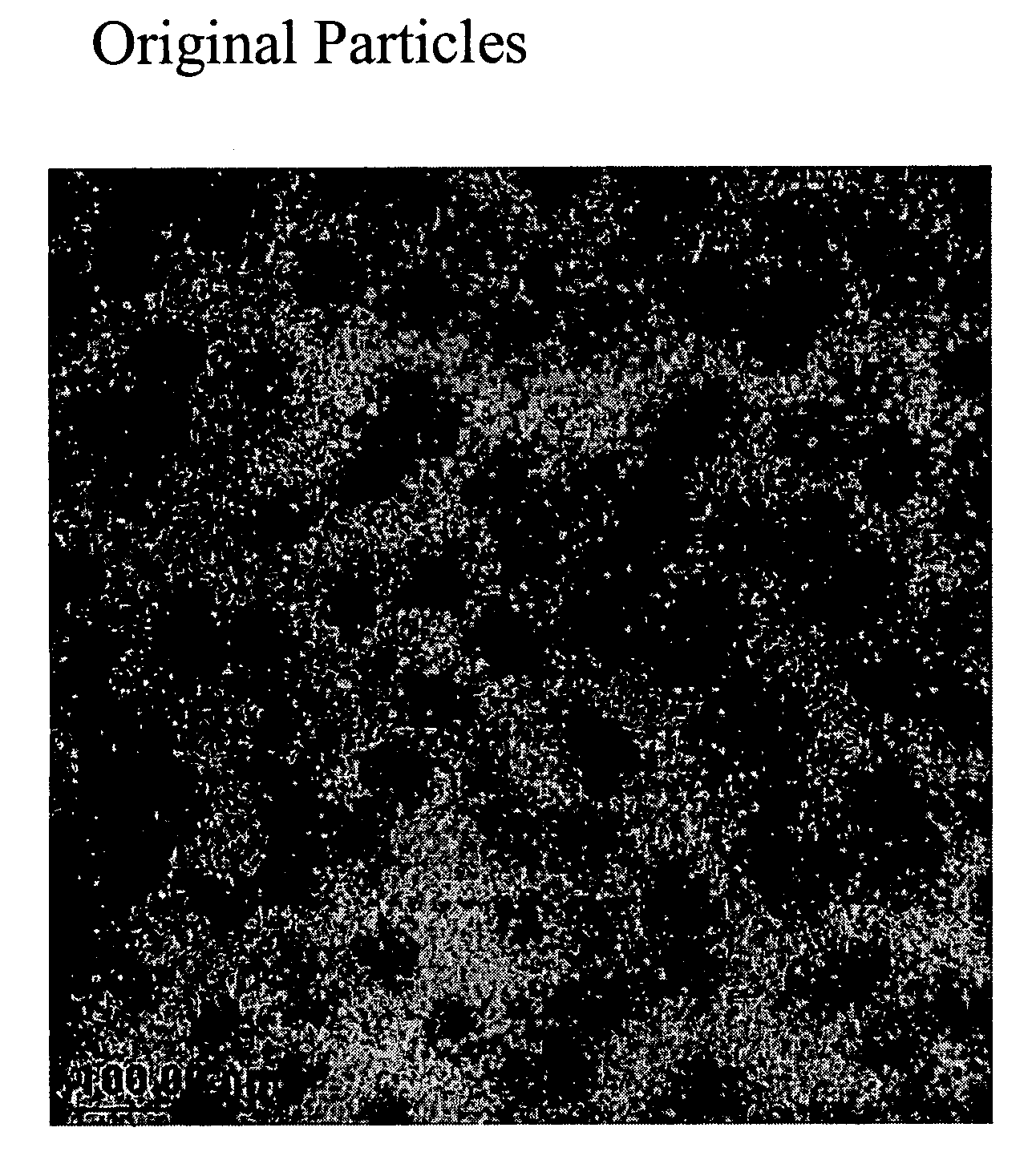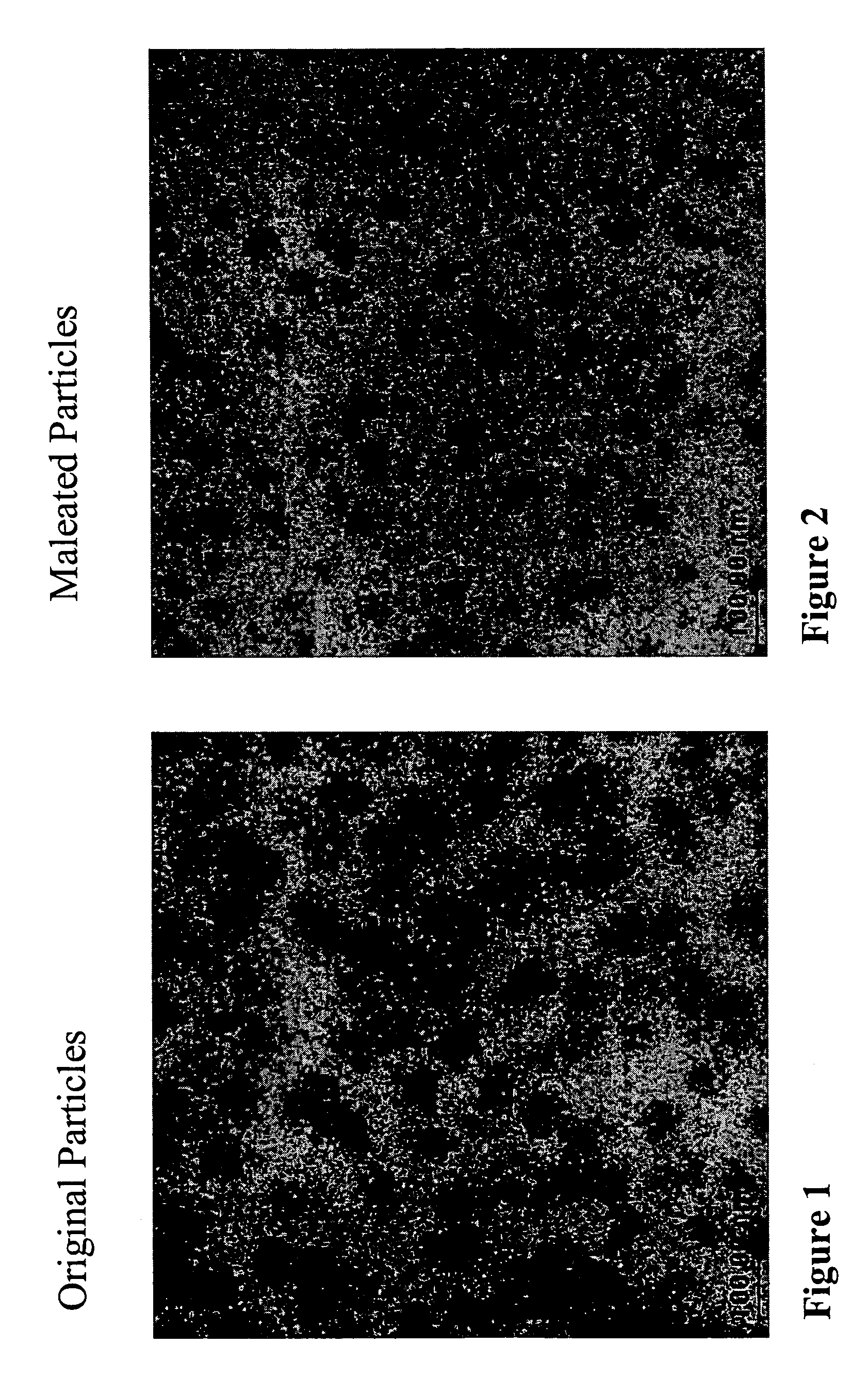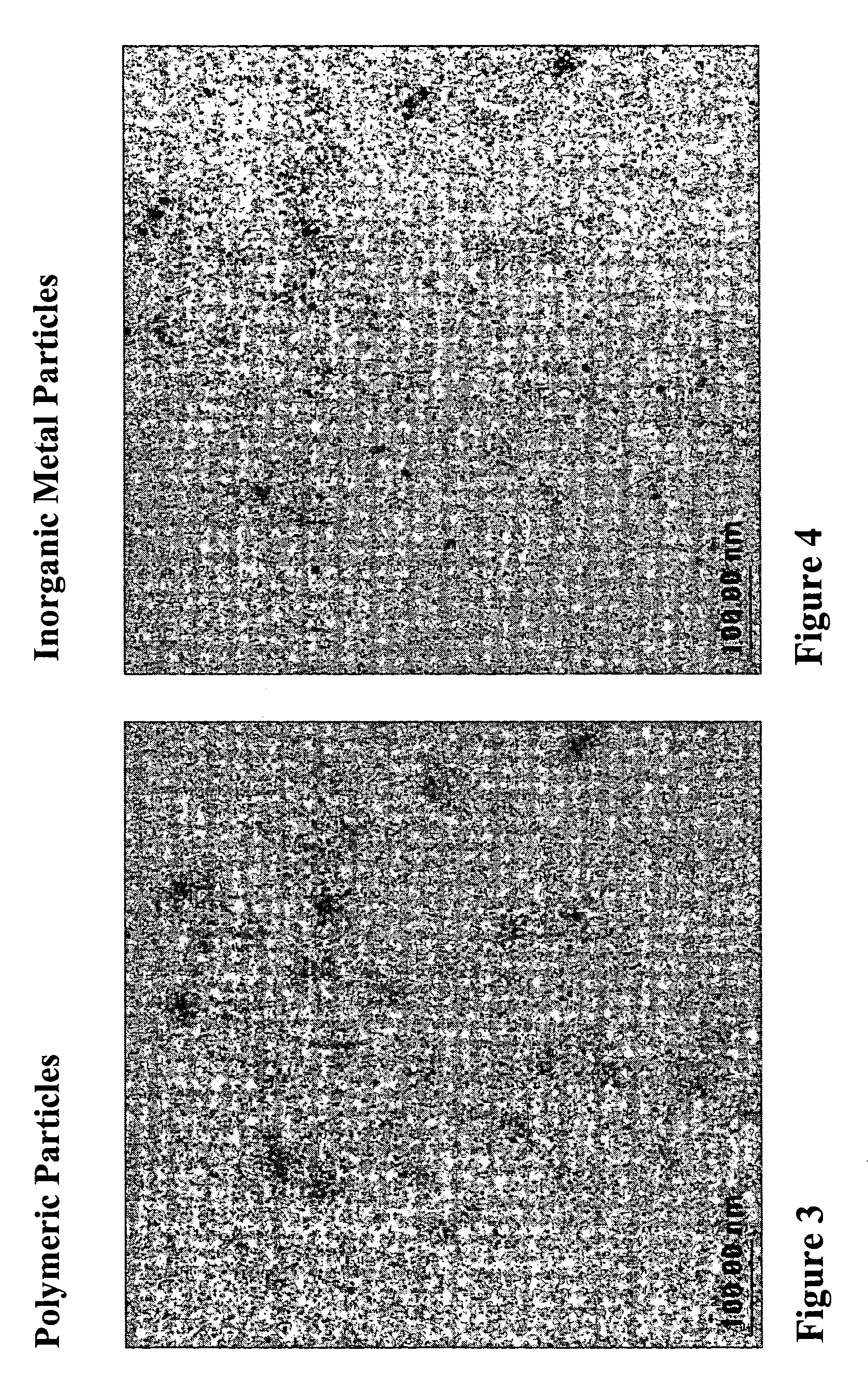Nano-sized polymer-metal composites
a technology of metal composites and nanoparticles, which is applied in the field of polymer nanoparticles, can solve the problems of difficult control of the size of nanoparticles during polymerization and/or the surface characteristics of such nanoparticles, and the degradation of the matrix material, i.e. rubber, characteristics, etc., and achieve the goal of reliably producing acceptable nanoparticles. , the development of a process capable of producing acceptable nanoparticles, the challenge o
- Summary
- Abstract
- Description
- Claims
- Application Information
AI Technical Summary
Benefits of technology
Problems solved by technology
Method used
Image
Examples
example 1
Preparation of PBD-PS Nanoparticles
[0062]A 7.5 L polymerization reactor was used for the preparation. The reactor was first charged with 517 g of hexane, followed by 1.0 kg butadiene / hexane blend (22.0 wt % of butadiene). The reactor was then heated to 57° C. After the temperature stabilized, the reactor was first charged with 2.5 mL of 1.6 M OOPS. The polymerization was initiated with 5.0 mL of a 1.68 M solution of butyl lithium in hexane. The batch temperature was maintained at 57° C. for the duration of the polymerization. After 2 hours (when the reaction was finished), the reactor was charged with 680 g of styrene / hexane blend (33 wt % of styrene). After additional two-hour reaction, the reactor was charged with 1.8 kg of Hexane. After another additional 20 minutes, the reactor was charged with 50 mL of divinyl benzene. The temperature was maintained at 57° C. for two-hours, and a small amount of the product was taken for GPC analysis. The GPC analysis of the product showed that...
example 2
Preparation of Maleated Particle Polymers
[0063]A 2000 mL three-neck round-bottom flask was used for the preparation. The middle neck was connected with a mechanical string motor. The left neck was used to charge various materials. The right neck was open for N2 purging and thermometer placing. To the flask, 300 mL of DTDP oil (C.P. Hall) and 60 g of maleic anhydride (Aldrich) were charged. The flask was placed into a silicon oil bath and heated to 170° C. After temperature was stabilized, 500 mL of the hexane solution containing 10% of the product from Example 1 was added in droplet fashion into the flask. The charging speed was very slow and the process took about 2 hrs. After charging, the flask was maintained at 180° C. for half hour. The product was dropped into toluene and precipitated via addition of isopropenol. The product was washed five times with isopropenol. TEM analysis (FIG. 2) showed nano-sized particles. 13C NMR analysis shows that the BR shell of particles contains ...
examples 3 – 4
EXAMPLES 3–4
[0064]Three 40 mL bottles were charged according to the following descriptions. Those bottles were then identified as bottle A, B, and C, respectively. The material inside those bottles was named accordingly as material A, B, and C.
[0065]A) 0.5 g of the products from Example 2 was added into 15 g THF solvent. After vigorous stirring for half hour, the maleated particles were dissolved. The solution was completely transparent.
[0066]B) 0.5 g of the products from Example 2 was added into 15 g toluene solvent. After vigorous stirring for half hour, the maleated particles were dissolved. The solution was completely transparent.
[0067]C) 0.5 g of CuAc2 was added into a 15 g of THF solvent. After vigorous stirring for half hour, the CuAc2 was dissolved. The solution was transparent to light.
PUM
| Property | Measurement | Unit |
|---|---|---|
| mean average diameter | aaaaa | aaaaa |
| mean average diameter | aaaaa | aaaaa |
| mean average diameter | aaaaa | aaaaa |
Abstract
Description
Claims
Application Information
 Login to View More
Login to View More - R&D
- Intellectual Property
- Life Sciences
- Materials
- Tech Scout
- Unparalleled Data Quality
- Higher Quality Content
- 60% Fewer Hallucinations
Browse by: Latest US Patents, China's latest patents, Technical Efficacy Thesaurus, Application Domain, Technology Topic, Popular Technical Reports.
© 2025 PatSnap. All rights reserved.Legal|Privacy policy|Modern Slavery Act Transparency Statement|Sitemap|About US| Contact US: help@patsnap.com



